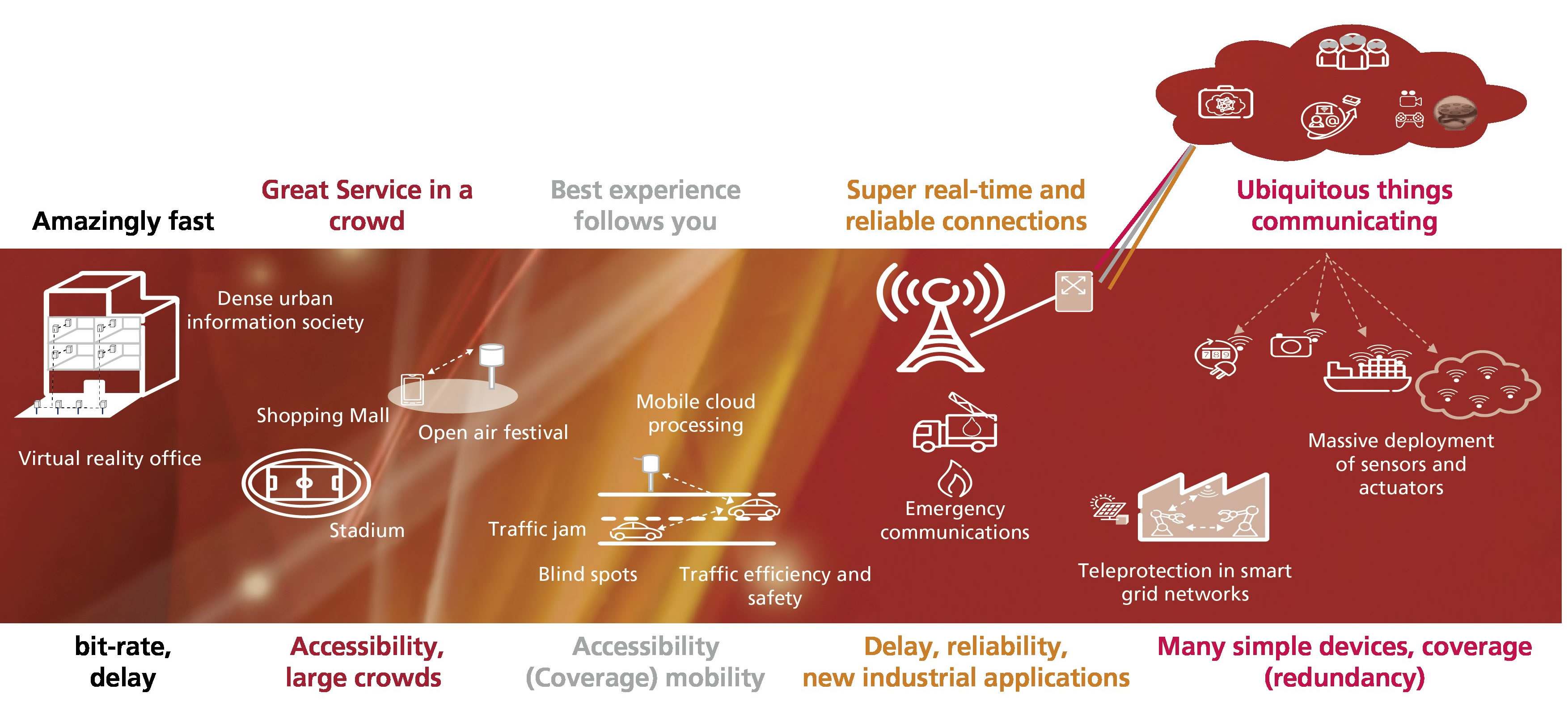Bringing 5G one step closer
New wireless technologies emerging in response to demand from the IoT are now augmenting global cellular networks, bringing 5G one step closer.
By Guillaume Crinon, Business Development Manager, Avnet Memec.
Twenty years ago massive investment was made by major telecomms operators around the globe in order to seamlessly connect people to one another: Mobile Network Operators (MNO) were born. At the same time the internet reached every single neighbourhood and home: optimism and enthusiasm in the ‘new economy’ fuelled the growth of the first telecomms revolution and dot.com bubble. Twenty years and two economic crises later, everyone agrees that it has been a success: half the world’s population owns a cell phone or a smart phone, has fixed or mobile Internet access and is now accustomed to spending monthly on a voice and data plan for services which have truly become vital needs.
In order for the MNOs and Mobile Virtual Network Operators (MVNOs) to maintain their Average Revenue Per User (ARPU), the service delivered to the end-user has no other choice than to improve; compensating for the data plan natural price erosion. This is the reason why 2G, 2.5G, 2.75G, 3G and 4G have taken over one another for the past twenty years, always promising more bandwidth, higher mobility, denser coverage and better quality of service.
With more SIM cards than inhabitants in most developed countries, the market has reached saturation. MNOs and MVNOs have therefore been trying hard to develop an M2M market for the past ten years. Given the cost of connectivity, the cost of the modem, the inadequacy of the technology with long-life low-cost battery-operated systems, this M2M market relying on legacy cellular networks is limited to a few verticals (automotive, tracking, vending machines, point-of-sales, security, etc), which can accommodate these constraints. This nevertheless leaves the vast majority of objects or ‘things’ we live and work with unconnected. Connecting them is the challenge of the IoT, either indirectly through a gateway, be it a smart phone or an internet box, or directly under a dedicated cellular network.
Technology needs
Looking at the way the 5G Public-Private Partnership and Mobile and wireless communications Enablers for the Twenty-twenty Information Society (METIS) are defining the needs for making our cellular networks evolve by 2020, it has become obvious that different technologies will coexist in order to best address the needs: amazingly fast calls for more bandwidth and bit rate; great service in a crowd could be served by repetitive broadcast schemes; best experience follows you will require sophisticated signal processing and network architecture, while ubiquitous things communicating calls for a simple, low-power, low-cost technology ‘thing’ coupled to an agile easy-to-deploy network infrastructure.

For all these applications, a WiFi or Bluetooth Smart router may not be available behind each and every device to service a connection to the Internet, while a 2G/3G connection will hinder the profitability with higher costs of connectivity and battery replacement. Nonetheless, all these applications have things in common: they are required to report only a few bytes of data per hour or per day; they tolerate a network latency in the order of magnitude of the second; the objects under the network need to neither be connected nor synchronised to the network since they sleep most of the time; the objects do not need to talk to one another in peer-to-peer mode; the objects mostly need to upload data to the network, and they can tolerate missed packets here and there.
Considering all these properties, it becomes possible to build a very light network infrastructure. Taking advantage of the low bandwidth and latency tolerance means the physical layer can operate at a very low bit rate (a few kb/s or less), yielding a higher link budget and a longer communication range between the object and a base-station, translating into wider cells, lighter infrastructure to deploy, lower capex and opex for the operator and lower cost of communication for the object. The latency tolerance also offers the possibility of managing Medium Access Control from the Cloud and potentially in future deployments even the physical layer itself with enhanced diversity.
Not needing to remain synchronised or peer-connected also mean that the objects can operate asynchronously with one another and that the network base-stations essentially continuously listen to the objects broadcasting randomly, while the predominance of uplinking allows deploying a very effective network where base-stations operate in half-duplex mode, with uplink and downlink bands sitting next to one another in a license-free ISM band.
Emerging solutions
A number of solutions now exist that can support such networks, including: narrow-band FSK/MSK with WmBUS metering private networks; LoRa by Semtech based on Chirp Sequence Spread Spectrum; Random-Phase-Multiple-Access by On-Ramp-Wireless and alternative Direct-Sequence-Spread-Spectrum layers to be standardised by Silicon Labs and others at the IEEE. In Europe, several utility companies are deploying their private networks dedicated to metering based on WmBUS. Others, such as Actility relying on the LoRa technology, are installing private networks for the Smart Grid and the Smart City.
But only one company has taken the step to actually raise funds to deploy and operate a truly global and general purpose IoT network on the basis of their Ultra-Narrow-Band Phase-Shift-Keying: Sigfox.
There is little doubt that other telecomms operators relying on competing technologies will also deploy their solutions in the years to come, and that as soon as a few hundred million connections are sold yearly worldwide, legacy cellular operators will consider allocating a few hundreds of kHz of their expensive spectrum to a similar technology, paving the way of what 5G will eventually bring to the IoT; ubiquitous low-cost and low-power Internet connectivity for all our ‘things’.










